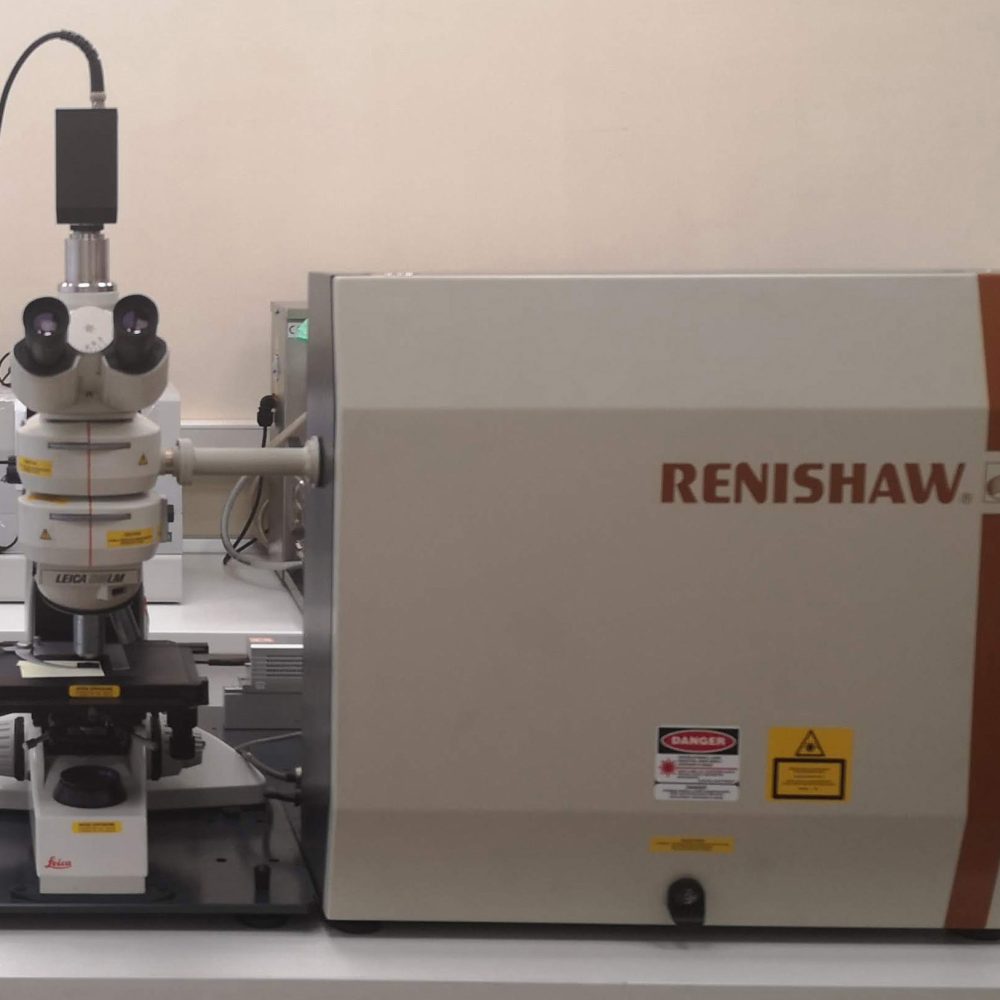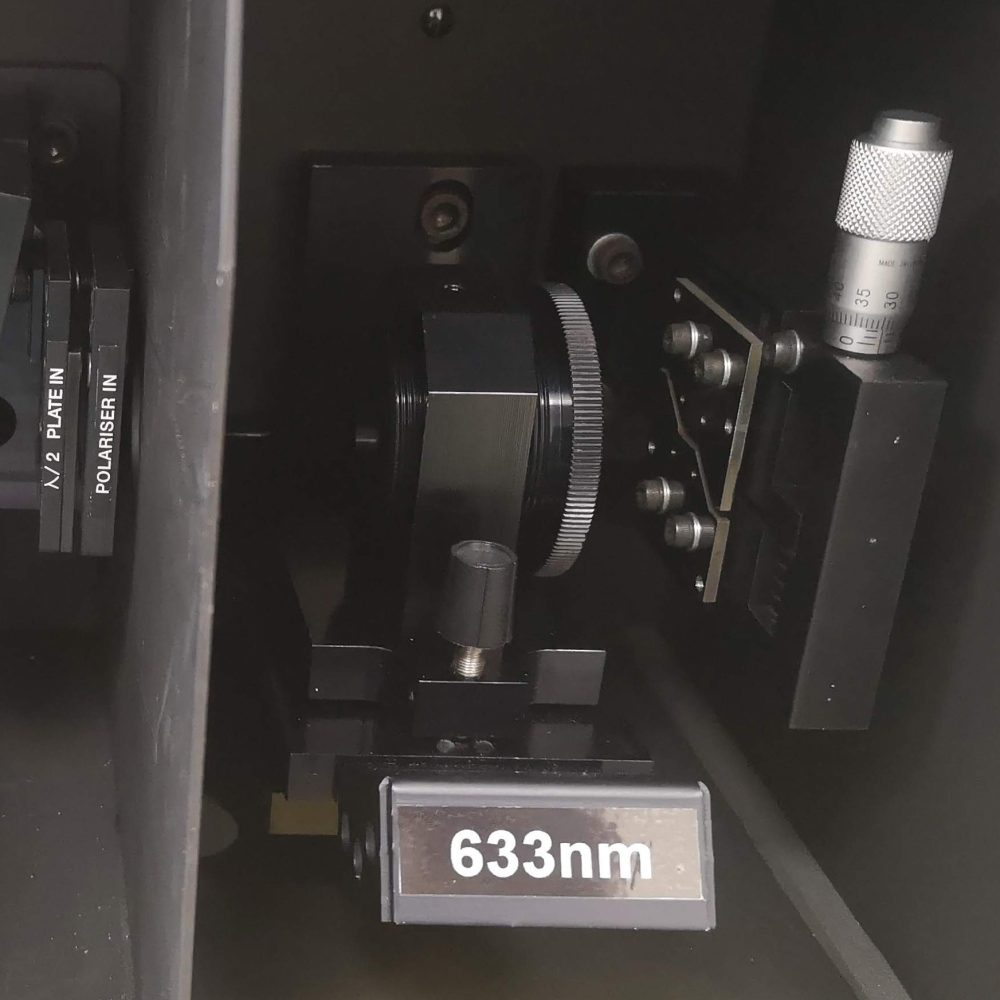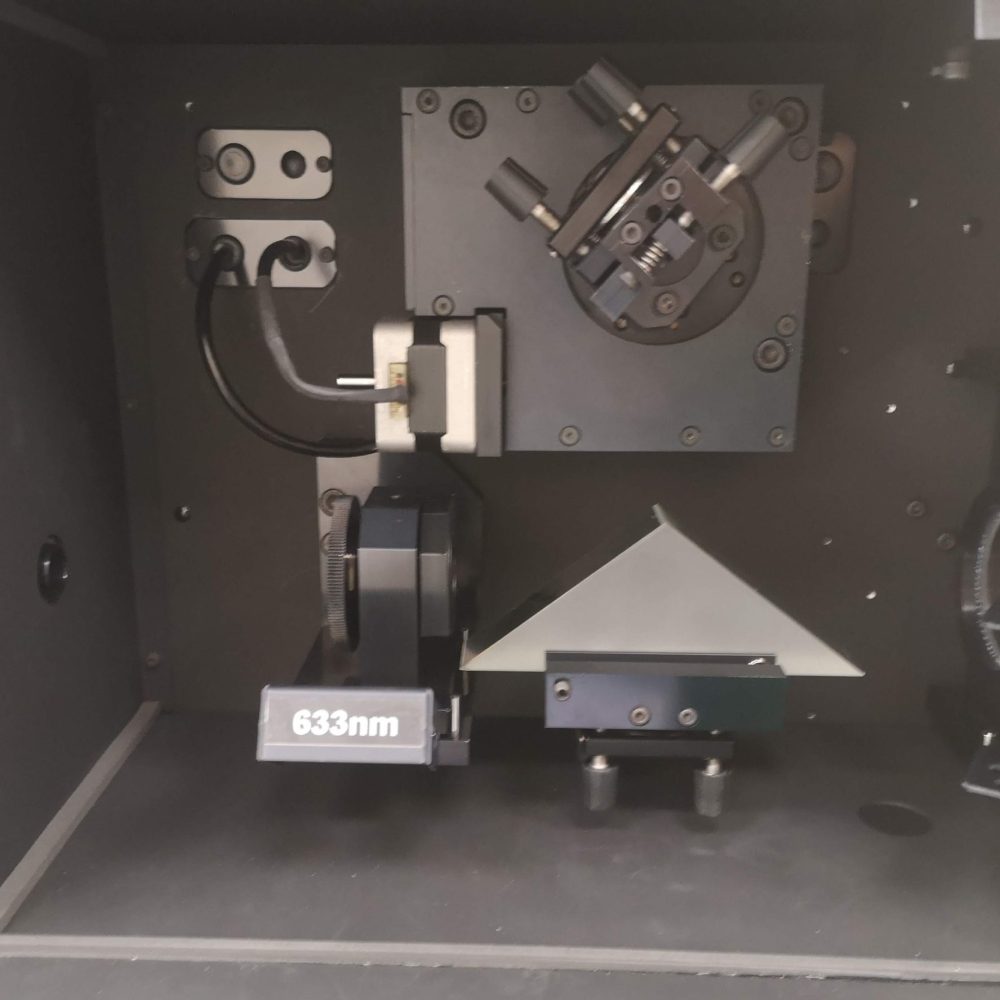
Raman and Infra-red spectroscopy
Raman and Infra-red spectroscopy are the most common spectroscopic methods for non-destructive chemical analysis for identification of chemical components of the material (chemical fingerprints of molecules and materials).
Raman spectroscopy is an analytical method based on measuring the scattering of infrared and visible light. Raman spectroscopy uses the interaction of monochromatic light coming from a laser with material of the sample, and detects vibrational, rotational and low frequency modes of the sample’s molecules known as Raman Scatter, which allows investigate the internal structure of a molecule and properties of a material.
Nearly all inorganic and organic materials display Raman scattering, excluding metals or alloys, which reflect laser light. In practice, Raman-based analysis can be applied to a wide variety of materials, from medical and pharmaceutical products as well as polymers to biological samples
Infra-red spectroscopy, also known as FTIR and NIR spectroscopy, is an analytical method that uses infrared light to scan test samples and observe chemical properties.
IR spectrometer irradiates sample with infrared light of about 10,000 to 100 cm-1, resulting in absorbtion some of radiation which then interacts with the sample molecules and turns into rotational and/or vibrational energy.
The resulting signal at the detector presents as a spectrum, typically in the range of 4000 cm-1 – 400cm-1, providing a unique chemical information of the sample and
making IR analysis a great tool for chemical identification.
IR and Raman spectroscopy are complementary methods. Generally, materials can be investigated using both techniques, but when a material is Raman inactive it is IR active and vice versa.
A major advantage of Raman spectroscopy is the possibility to make measurements in aqueous media due to no interfering water band in the spectrum while water features are dominant in IR spectrum when present. The second advantage is the minimal sample preparation required due to a possibility to make analysis through packaging.


Raman and Infra-red spectroscopy
Renishaw micro-spectrometer available in our laboratory consists a Raman spectrometer with three lasers that cover the spectrum from the deep UV into the Infra-red and FTIR spectrometer, allowing the widest range of sample materials to be analysed.
With the attachment of spectrometers to the microscope, characterisation that can be carried out even from a single microscopic crystal of any material.
Additional features of our system allow automated and high speed Raman and FTIR chemical imaging of both large or small area samples. Spectral maps fully illustrate the most complex samples and non-invasively provide information on their composition, interactions between materials, distribution within the sample.
Our Equipment
Renishaw InVia Raman spectrometer combined with a Smith Detection IlluminatIR II FTIR module
The InVia system is a modular unit that is installed on an Leica DM 2500M optical microscope to add Raman and FTIR spectroscopy capabilities.
It can efficiently measure samples on the order of 1 x 1 micrometers with a spectral resolution < 1cm-1, rapidly, non-destructively and with ease.
Excitation lasers:
405 nm, 532 nm, 633 nm, 785 nm, 1064 nm
Objectives: 20x – 100x

Please feel free to contact us
Please feel free to contact us for further information on samples, analyses and applicable rates.

Spelling error report
The following text will be sent to our editors: